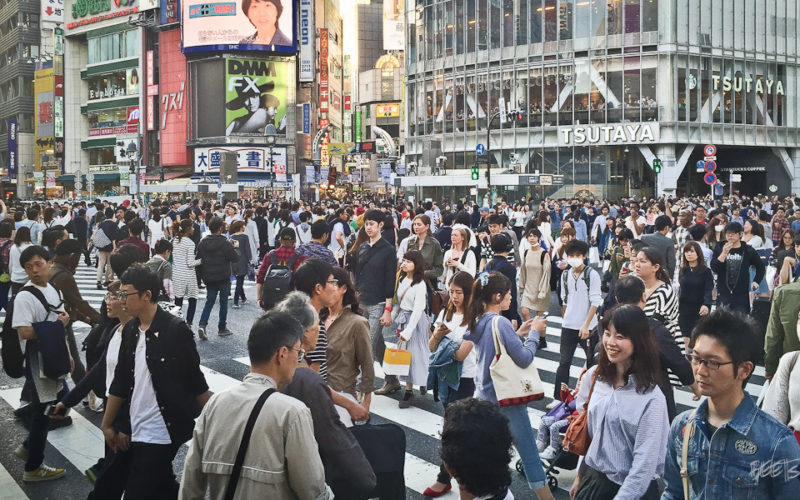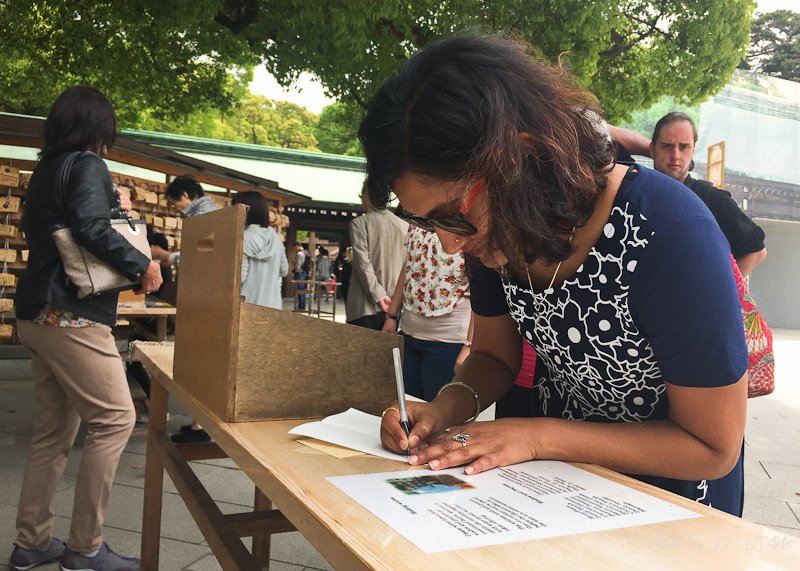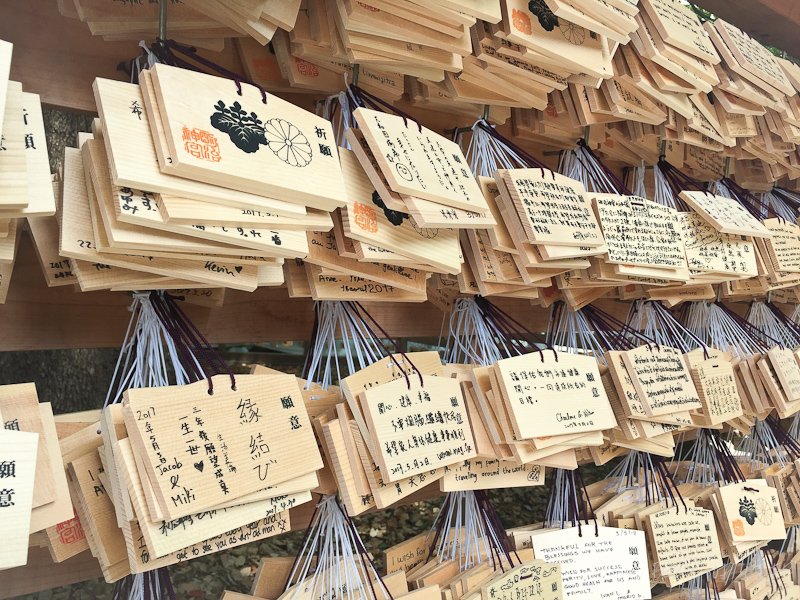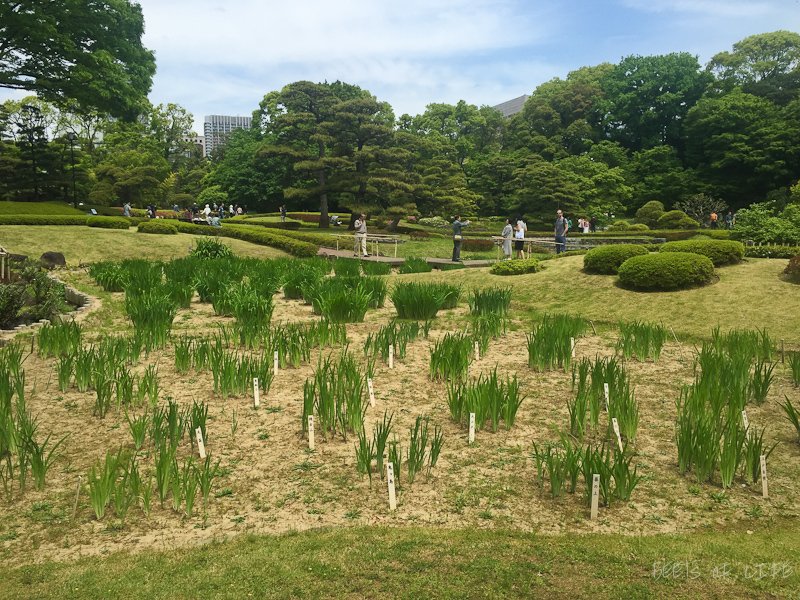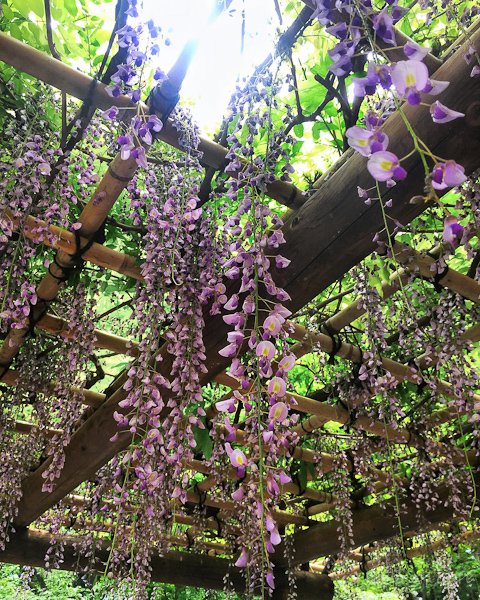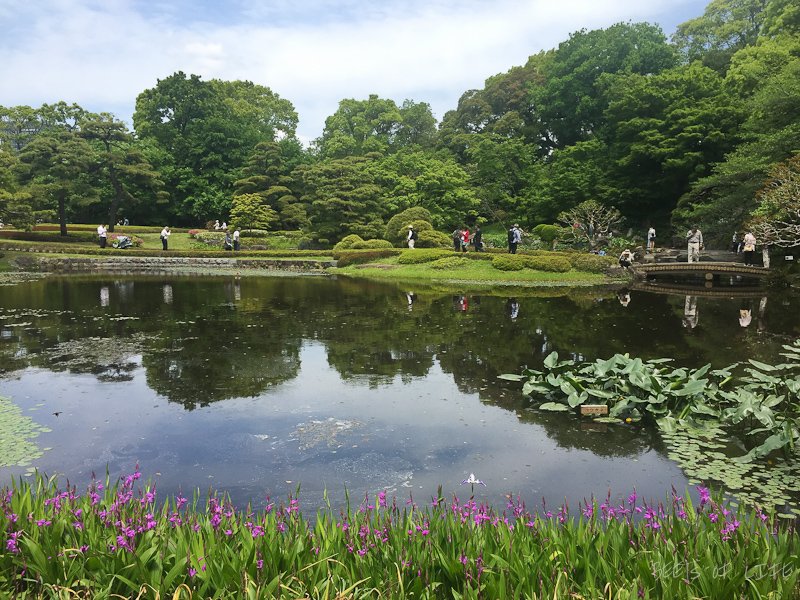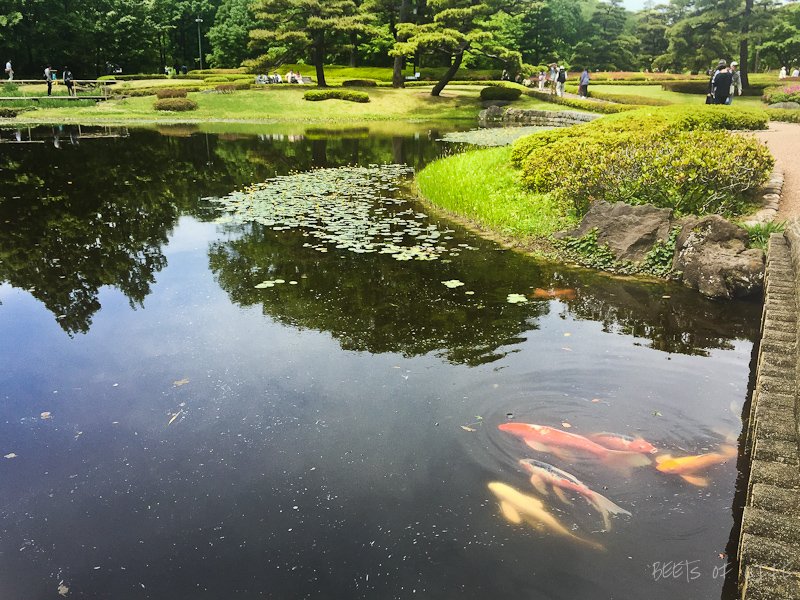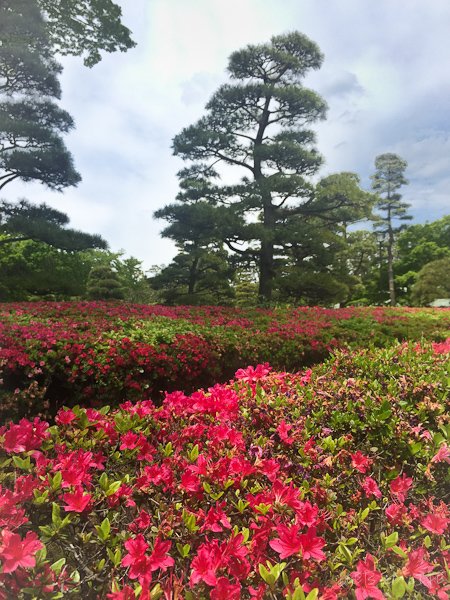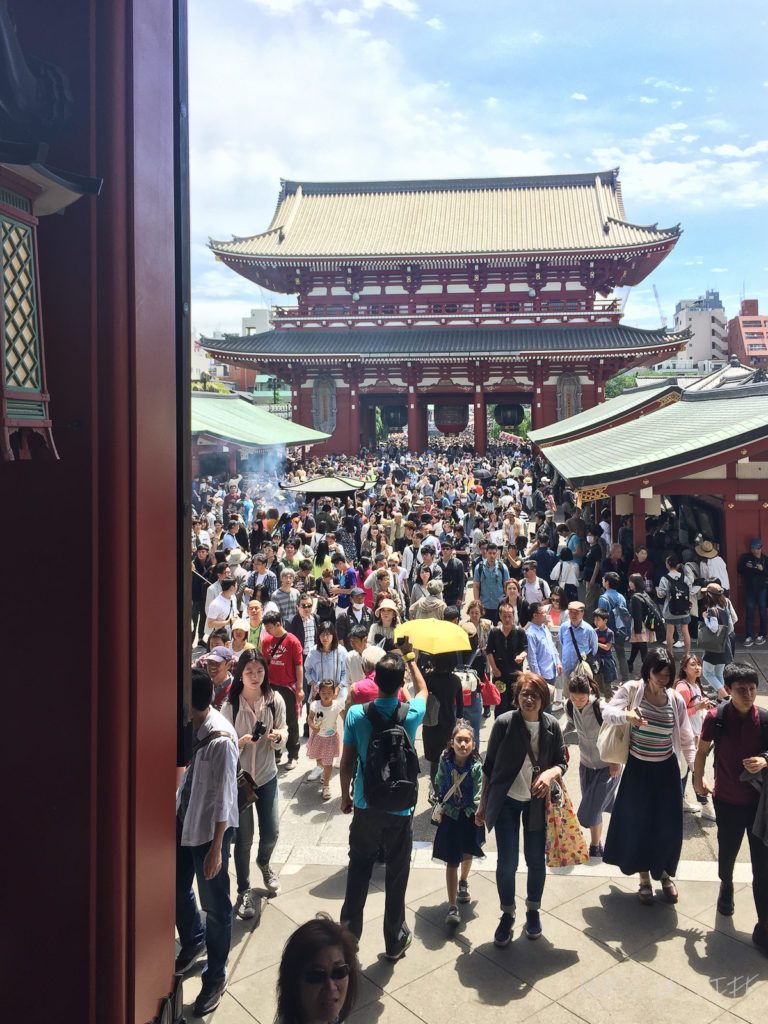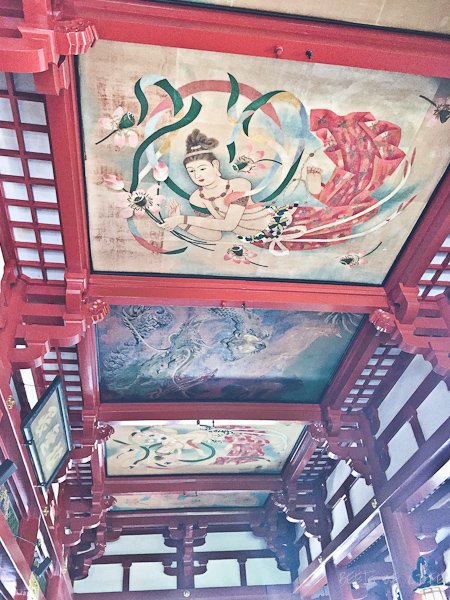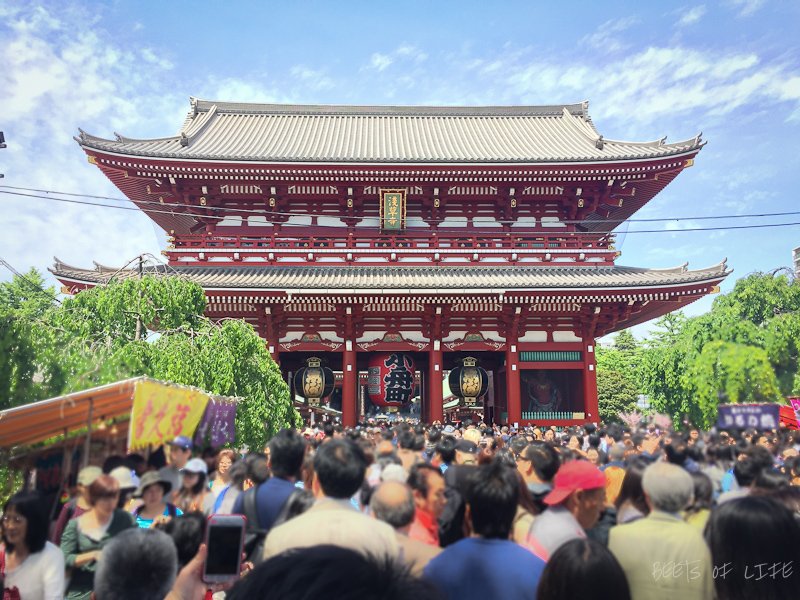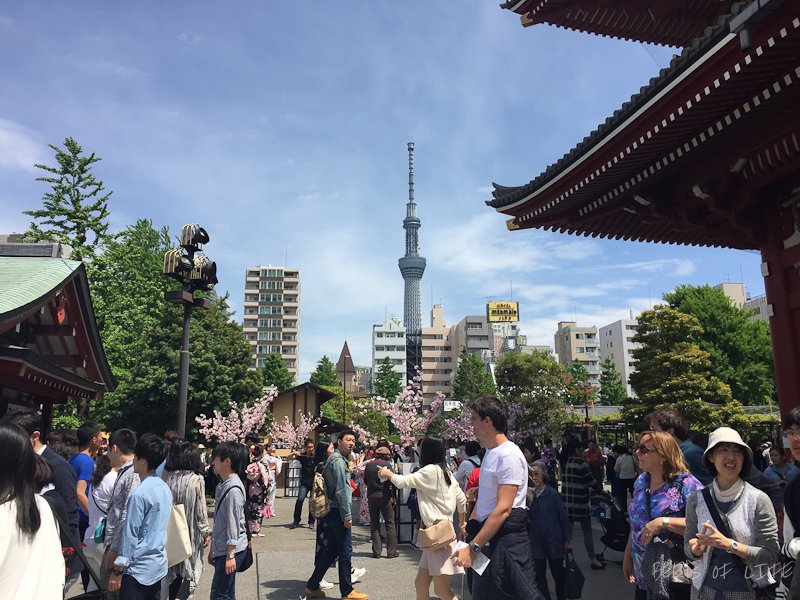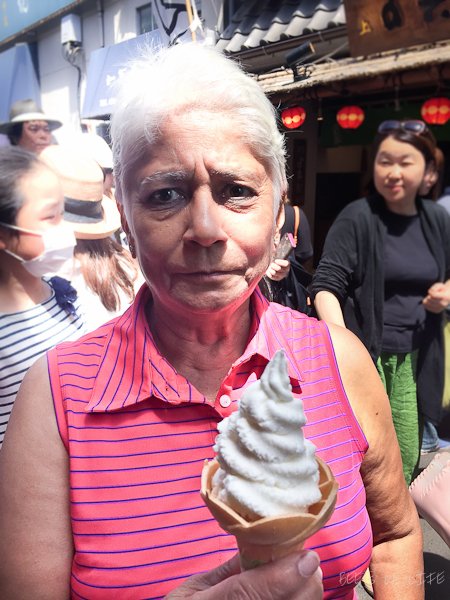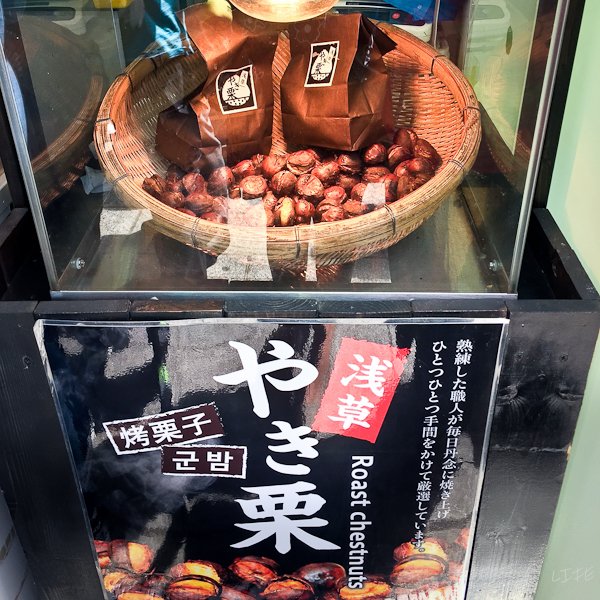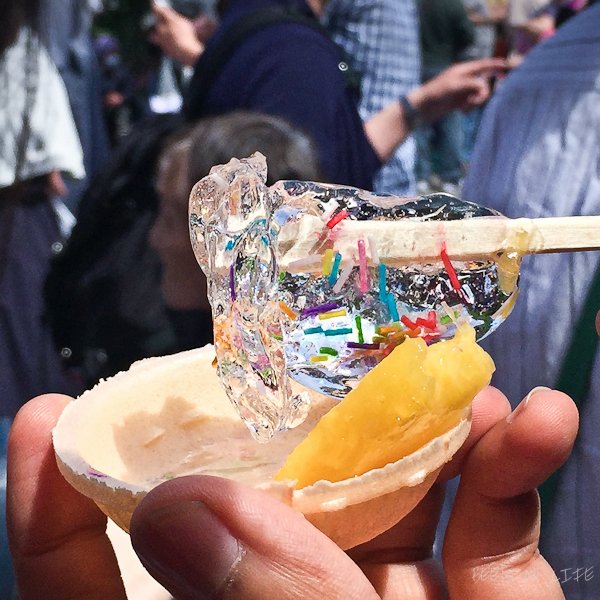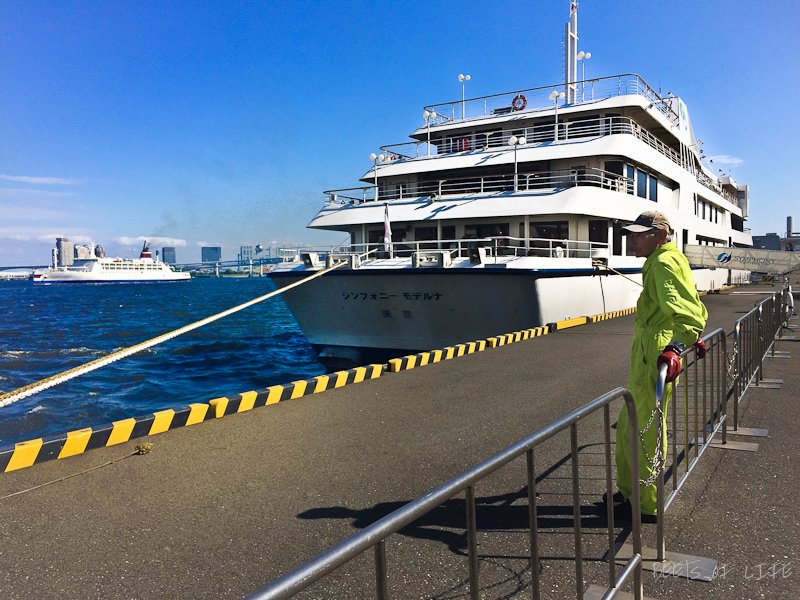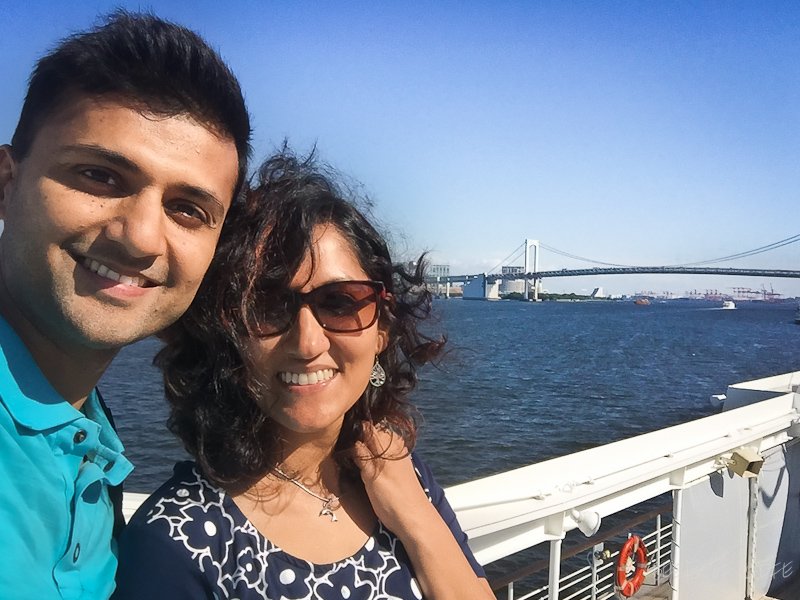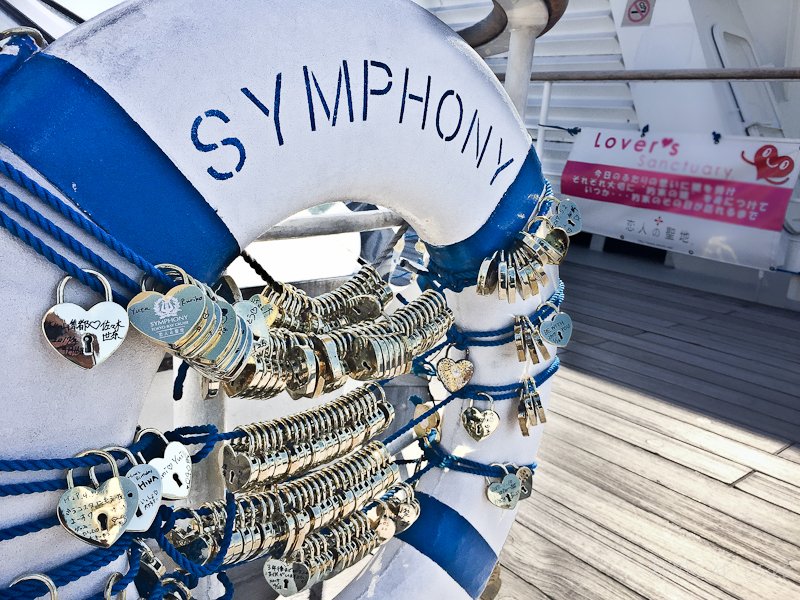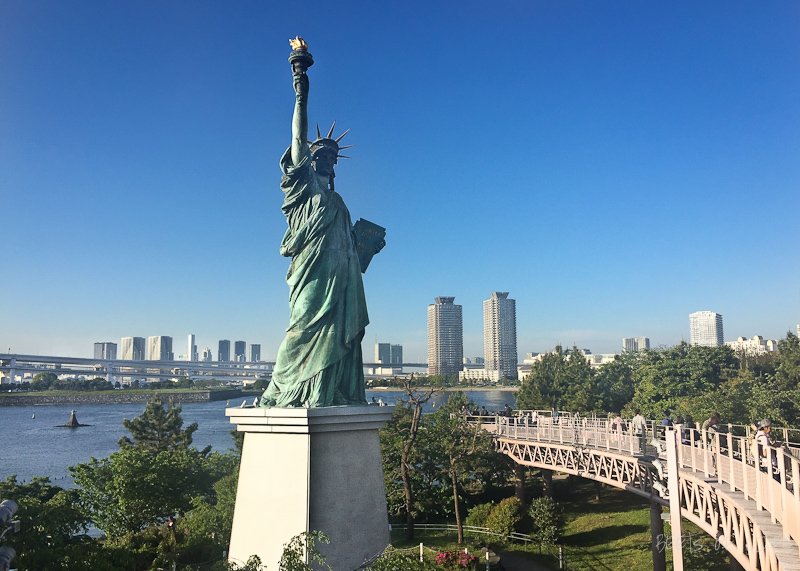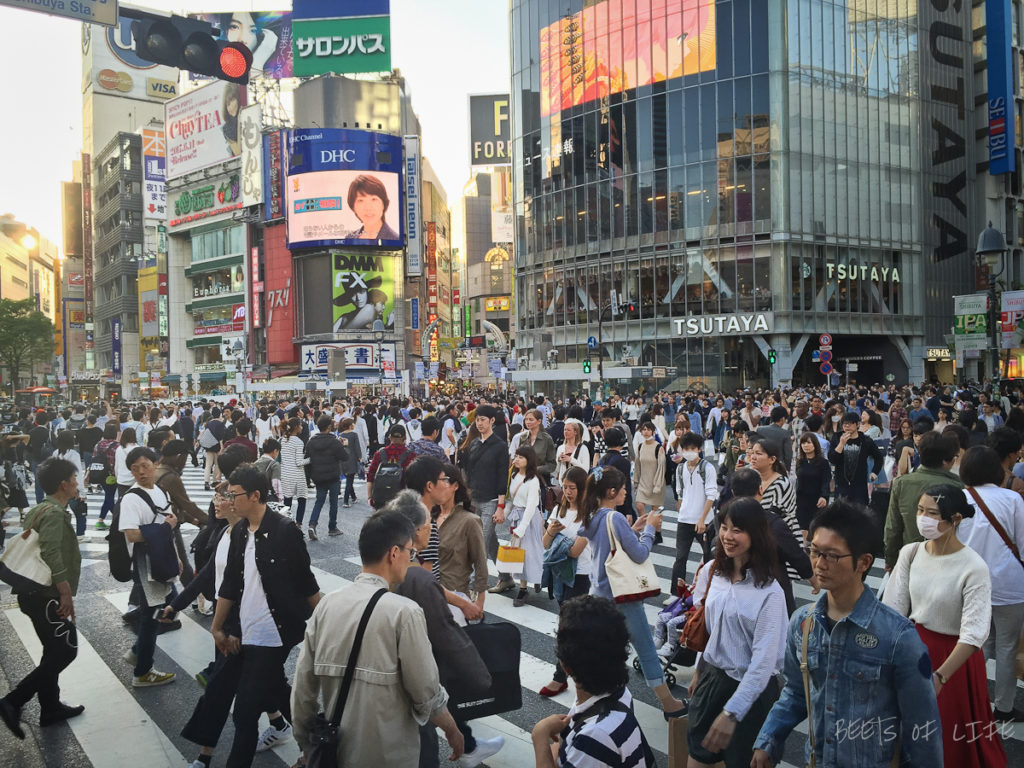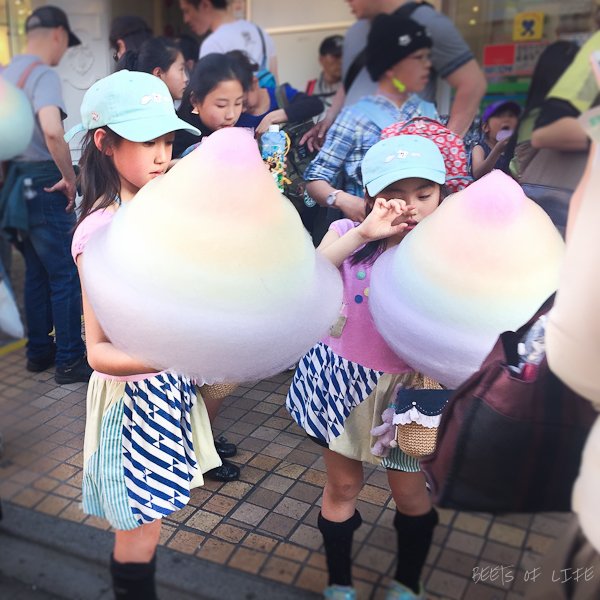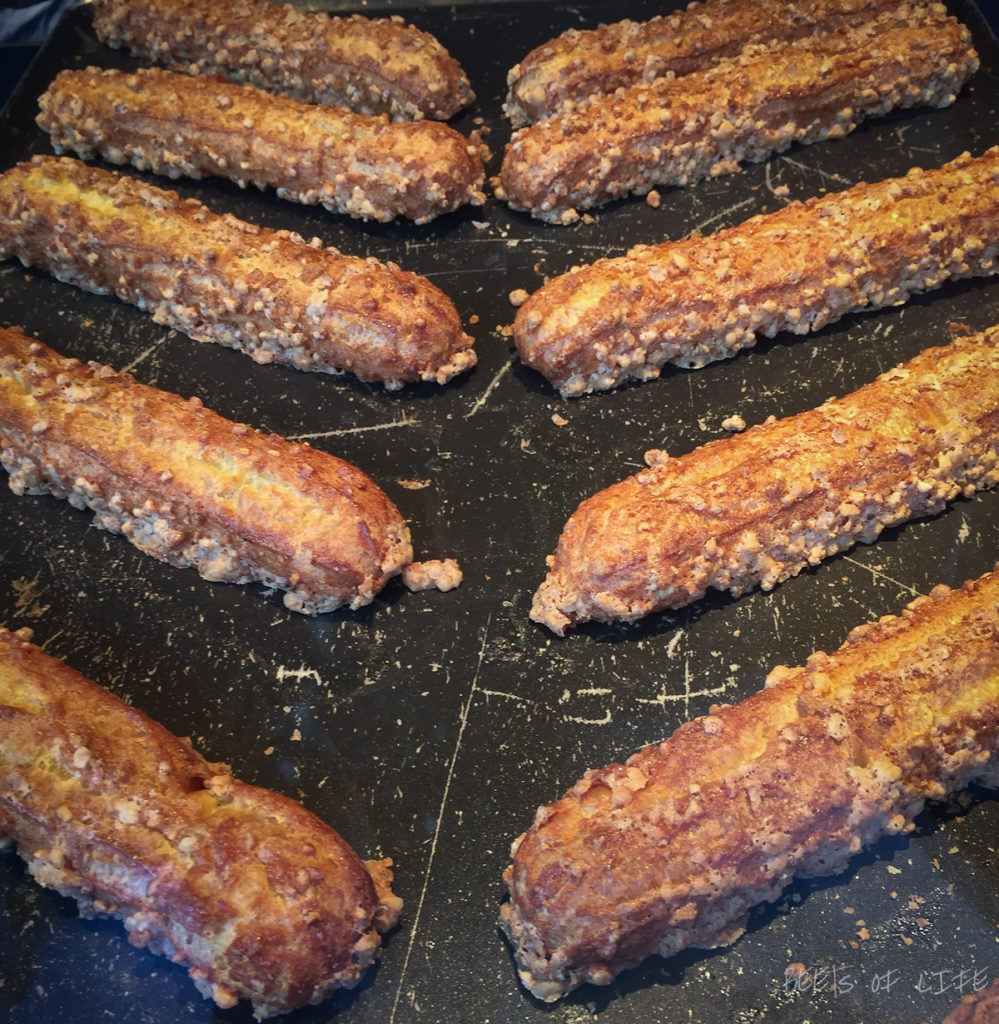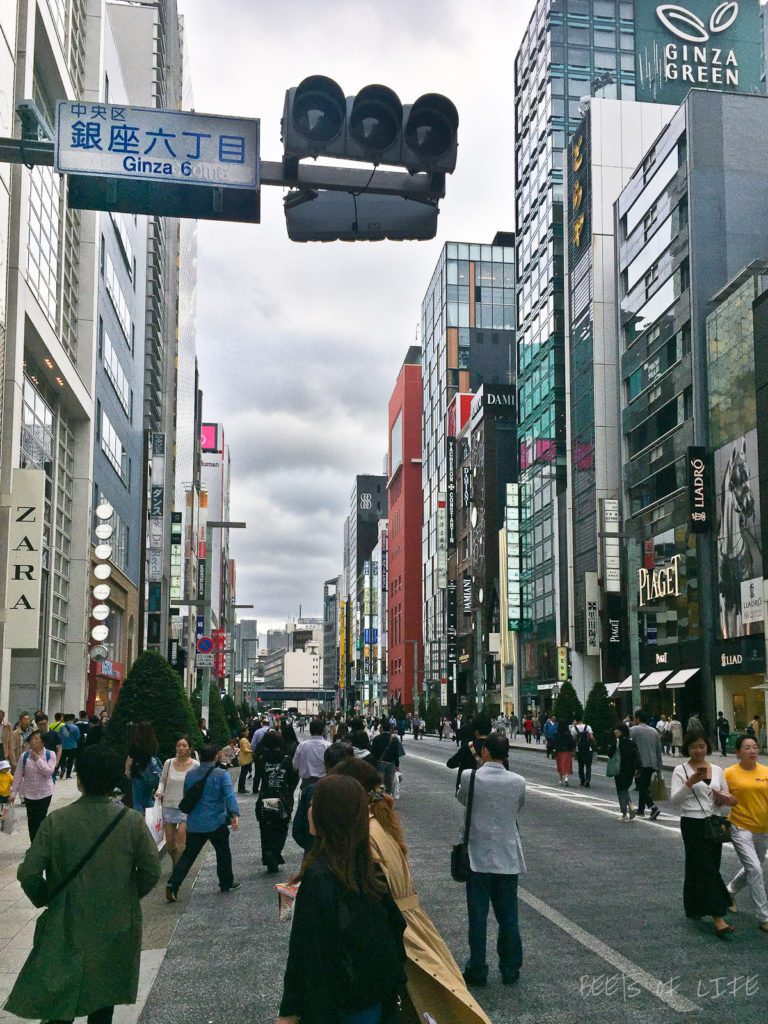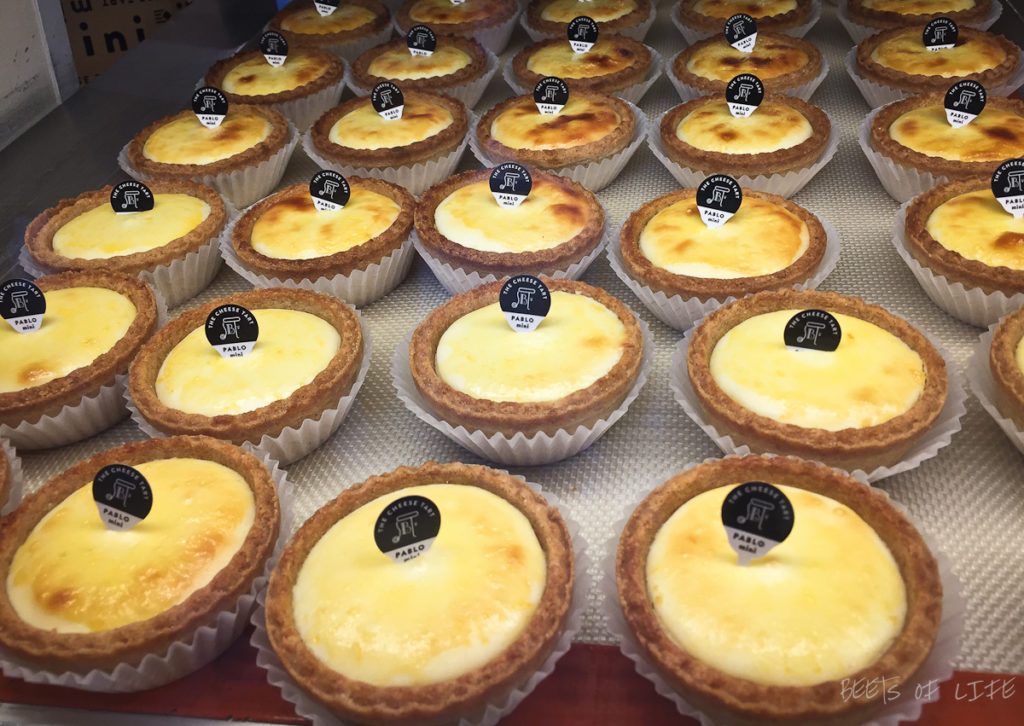Tokyo in 5 days: Sights discovered and neighborhoods visited
Tokyo was our first destination in Japan and we spent a total of 5 days during our 14 day trip here. The city is bustling with activity and is alive until the wee hours of the night. Despite the population, Tokyo is clean and pristine. It puts the cleanest US cities we have traveled to, to shame. Within the first few days in Tokyo, we were blown over by everyone’s sense of discipline. No one seemed to break the rules, jump the line, push or curse. When the traffic light is red you stop and wait, when the train arrives at the platform, you get in line to enter. You “bow”, a lot, in gratitude, in respect and in appreciation.
Visiting Tokyo is a great introduction to the Japanese culture: from exploring the diverse neighborhoods to admiring the beautiful Japanese gardens to paying respects at shrines and temples. We learned a lot about Japan’s architecture, music, rituals, the matsuris (religious festivals) and arts. We loved every bit of Tokyo and couldn’t seem to get enough of it.
Quick links
Tokyo Sightseeing
Given our short duration in Tokyo, our travel consultant booked us on the Panoramic Tokyo tour with Sunrise Tours. The tour covers most of the key sights that a first-timer would want to visit. It was quick paced and although “Mama Vora” managed okay, it is something to consider for senior citizens. Our tour guide spoke good English and kept us entertained with facts about Japan throughout the day. One downside was that we didn’t get any vegetarian options at the lunch buffet, so we had to settle for salad and dessert. If you do decide to take this tour, given what we liked, we’d recommend skipping the full day tour and going with a half day one instead. Read on for more details about the sights we visited.
Meiji Jingu Shrine (Beets Score: ****)
The Meiji Jingu shrine was the first of many shrines that we visited across Japan. And for that reason it was pretty special for me. As a part of our tour here, we had an opportunity to learn about torii gates (separates the profane from the sacred), shrines vs. temples (the former is for Shintoism and the latter Buddhism), the Shinto-Buddhist religion (over 90% of Japan follows a mix of both Shintoism and Buddhism), the “temizuya” water pavilion (a place to rinse and purify your hands and mouth), praying in a Shinto shrine (make an offering, ring the bell, bow twice, clap twice, pray, bow once). This was also our first experience of traditional Japan. The simplicity of the architecture and the landscape at the shrine is marvelous, and greatly contributed to the zen-like experience when walking around the complex. In our books, this is a must-see shrine in Tokyo.
Imperial Palace East Garden (Beets Score: ****)
Since visitors are not allowed in the Imperial Palace itself, the alternative is to go to the East Garden. Walking over the moat to enter the palace complex, of which these gardens are a part of, gives you a sense of how large the complex is. The garden is beautifully manicured and resplendent with flowering plants, koi ponds, bridges, and dramatic trees. Japan truly exemplifies the mix between the old and the new, east and west, traditional and modern. The gardens set against a background of modern buildings, is a supreme example of it.
Senso-ji Temple (Beets Score: *****)
If the Meiji-Jingu Shrine was a zen experience, the Senso-ji temple was anything but. We were bang in the middle of the “Golden Week” (a span of 5 consecutive holidays in Japan), and the temple was teeming with people. This reminded us more of traditional Hindu temples that are loud, have way too many people and are bustling with hoards of street vendors serving all sorts of food. It was an exhilarating experience to say the least, and a must-visit. Unfortunately, we missed walking the entire stretch of the Nakamise shopping arcade in front of the temple; we did get to taste a few of the local delicacies. I would say hit the food stalls serving sake ice cream, dango (chewy rice balls), roasted chestnuts and other unique treats.
Tokyo Bay cruise (Beets Score: *)
The Symphony bay cruise from Tokyo is a laid back one hour long tour in the bay. It is also something we would not recommend. We did it as a part of our day tour, however, there isn’t much going on in terms of the scenery. The ship is designed more for relaxing or parties than sightseeing. One doesn’t get to see breathtaking views of the Tokyo skyline. Pretty disappointing! On the upside, we got to give our feet some rest, admire our pictures, reflect on the day and most importantly, Mama Vora got to take a 30 min cat nap onboard.
Odaiba (Beets Score: *)
Another useless and thankfully last stop on our full day Tokyo tour was Odaiba. Odaiba is a man-made island that is popular for shopping and entertainment. For those familiar with Washington DC neighborhoods, it closely resembles National Harbor. We were hungry and tired by the time we got here and shopping was the last thing on our minds. With just 40 minutes here (thanks to bad traffic during the Golden Week), we got to walk around and watch a couple of street performers. We did get to see the Statue of Liberty from here though.
Happo-en Garden (Beets Score – ****)
I would say more of a quintessentially Japanese garden than even the Imperial Palace garden. This stop was not part of the Panoramic Tokyo tour, we did it on our own one morning from Akasaka. The garden seems small, but has a lot going on. Outside of the typical koi-pond, water falls and dramatic trees, it has beautiful and centuries old bonsai trees, a shrine and a traditional Japanese tea house (you can book yourself to a tea ceremony here). I highly recommend this garden. We easily spent a couple of hours enjoying the serene landscape.
Neighborhoods We Visited
When we were not on a guided tour of Tokyo we were busy exploring different neighborhoods. Our favorites are Harajuku and Shibuya. Here are all the ones we visited.
Akasaka (Beets Score: ****)
Akasaka was our home for the first two days we were in Japan. It is not the place I would have stayed in or even visited on my first trip to Tokyo, however, I am glad I got to see this charming side of the city. The neighborhood that our hotel, Hotel Centurion Grand Akasaka, is located in was touristy but not overwhelming. It seemed to have everything one would want in a Japanese neighborhood. Narrow streets, shops, bars, restaurants, pachinko parlors, vending machines, typical storefront signs, convenience stores, proximity to metro stations – you name it. It was a wonderful introduction to the city and the country. Akasaka served as a convenient base to explore the rest of Tokyo and we thoroughly enjoyed coming back here and strolling around after a long day of sight-seeing. We were pleasantly surprised to find quite a few vegetarian options to eat while in this area (our hotel included).
Shibuya (Beets Score: *****)
“Shibuya Crossing” is possibly the world’s largest scramble crossing (all pedestrian lights at this intersection of 5 major roads turns green at the same time) with over 2,500 people crossing it at a time during rush hour. It is also one of the 10 reasons why you must visit Japan. In terms of an activity it may not seem like much (heck, you are just crossing a street), but we would highly recommend it. Didn’t think I would say this, but it was fun “scrambling” again, and again, and again. If you are done taking pictures and videos here, there is also a lot of shopping and cafes. Beena stocked up on her natural LUSH products here, while I was picking out cool Japanese t-shirts from Uniqlo. We hung out at a quaint french cafe for coffee and dessert and also ate at an awesome 100% vegan restaurant in the neighborhood called Nagi Shokudo, making it a memorable experience. Highly recommend!
Harajuku (Beets Score: *****)
The Harajuku neighborhood, and more specifically Takeshita dori, is worth experiencing. A great place to take in the quirky side of Japan. A one-stop shop for custard filled desserts, owl forests, esoteric fashion, and giant cotton candies. We ended up walking around this area for 4-5 hours and had a great time people watching. The highlight has to be eating the crunchy cream puffs at Croquantchau Zakuzaku. Simply divine! The owl forest was also a very unique and interesting experience. I have to wonder if these animals are treated well. Hmm!
Ginza (Beets Score: ***)
What the 5th Avenue is to New York, Ginza is to Tokyo. Here you will find building upon buildings of high end fashion stores. 12 floors of Uniqlo, anyone? This was our other “home” in Tokyo, and we were sorely missing Akasaka. Definitely overpriced, and not for the morning person. We were not interested in shopping so we didn’t care too much for this neighborhood and what was worse is that nothing, and I mean nothing, opens before 11:00 AM. If you are not into shopping, I’d skip this neighborhood altogether. The only thing going for it is super easy access to good, but expensive, vegetarian food!
Akihabara (Beets Score: ***)
We absolutely had to check out this neighborhood that we had heard so much about. It is definitely the mecca for gaming arcades, anime and manga fans. This part of Tokyo is also sprinkled with maid cafes and “adult” shops. For us dessert fans, there was Pablo minis cheese tarts. Yummalicious! Long line but worth the wait. I liked the chocolate filled custards while Beena liked them all.
Finally, after five jam packed days in Tokyo we were ready for a relaxing ryokan and onsen experience in Hakone. Check out our Hakone Photo Blog!

